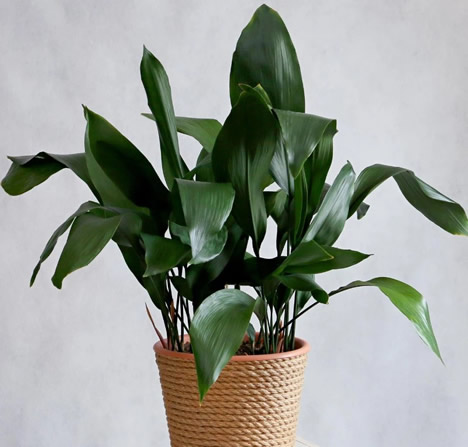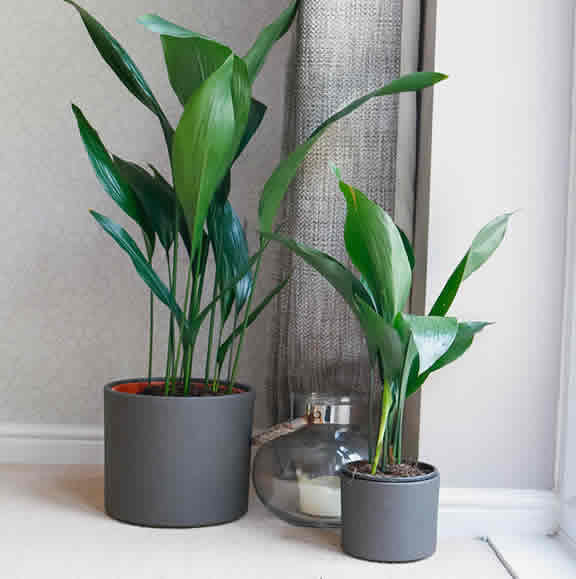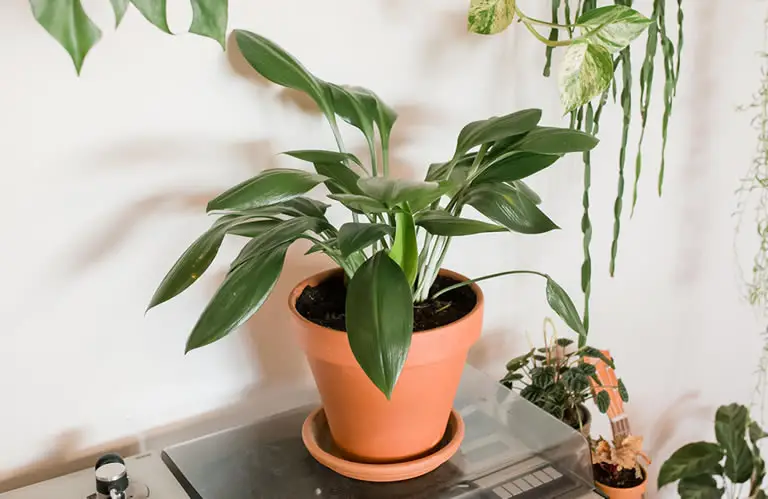The Cast Iron Plant (Aspidistra elatior) is as tough as its name suggests. Known for its durability, glossy green leaves, and ability to tolerate neglect, it’s one of the easiest houseplants to care for—especially in low-light homes. If you’ve struggled with other plants or need something dependable for a dim corner, this is your plant. It won’t demand much, and it’ll look good doing it.
Here’s how to grow and maintain a happy, healthy Cast Iron Plant indoors and out.
Table of Contents
- Low Light, No Problem: Where to Place Your Cast Iron Plant Indoors
- Forget-Me-Not Watering: How Often to Water a Cast Iron Plant
- The Temperature Sweet Spot: Keeping Conditions Comfortable
- Minimal Feeding, Maximum Growth: Fertilizing the Right Way
- Slow and Steady: When and How to Repot
- Best Spot in the House: Where the Cast Iron Plant Looks and Feels Best
- Caring for Cast Iron Plants Outdoors: Great for Shady Patios and Protected Gardens
- Common Cast Iron Plant Problems and How to Fix Them
- Final Thoughts
Low Light, No Problem: Where to Place Your Cast Iron Plant Indoors
This plant thrives in low to medium indirect light and actually prefers to avoid direct sunlight altogether.

Harsh sun can scorch its leaves, leaving them faded or crispy.
It’s the perfect choice for rooms that don’t get much natural light or where other houseplants may struggle.
Even artificial light is enough to keep it going.
Forget-Me-Not Watering: How Often to Water a Cast Iron Plant
One of the reasons the Cast Iron Plant is so beloved is its tolerance for missed waterings.
Let the soil dry out between waterings, then soak the soil thoroughly and allow any excess to drain.
It’s far more forgiving of drought than overwatering.
If the soil stays soggy, root rot can set in, so make sure the pot has good drainage.
The Temperature Sweet Spot: Keeping Conditions Comfortable
This plant does best in average indoor temperatures between 60°F and 75°F.
It tolerates cooler temps better than many tropical houseplants but doesn’t appreciate frost or sudden cold drafts.
Keep it away from open windows in winter or blasting AC units in summer.
Minimal Feeding, Maximum Growth: Fertilizing the Right Way
Cast Iron Plants don’t need a lot of food. A balanced, diluted liquid fertilizer once every 6 to 8 weeks during spring and summer is enough.

Skip feeding during fall and winter when the plant isn’t actively growing.
Too much fertilizer can actually damage the roots or cause leaf browning.
Use a good quality 10-10-10 fertilizer, such as this one, or a 20-20-20 fertilizer, like this one.
Slow and Steady: When and How to Repot
These plants grow slowly, so you won’t need to repot them often. Every 3 to 4 years is usually enough.
Repot in spring using fresh, well-draining potting soil.
Choose a pot that’s only slightly larger to avoid excess soil staying too wet around the roots.
Best Spot in the House: Where the Cast Iron Plant Looks and Feels Best
The Cast Iron Plant is ideal for low-light bedrooms, hallways, entryways, or shady corners of the living room.
It’s also a smart pick for offices with minimal natural light or fluorescent lighting.
Caring for Cast Iron Plants Outdoors: Great for Shady Patios and Protected Gardens
Cast Iron Plants can also be grown outdoors year-round in warm climates (zones 7–11), or during the summer months in cooler regions.

They love shady, protected areas—under trees, along north-facing walls, or on covered patios. Avoid areas with strong, direct afternoon sun or soggy soil.
Water occasionally when the top couple of inches are dry, and mulch lightly around the base if planting in the ground.
If bringing the plant outside for summer, slowly acclimate it to the change and bring it back indoors before temps dip below 50°F.
Common Cast Iron Plant Problems and How to Fix Them
Brown or crispy leaf tips
Usually caused by dry air, underwatering, or over-fertilizing
Fix it by watering regularly, cutting back on feeding, and making sure humidity isn’t too low
Yellowing leaves
Often a sign of overwatering or poor drainage
Fix it by checking your pot for drainage holes, letting the soil dry out, and adjusting your watering schedule
Leaves turning pale or scorched
This means the plant is getting too much direct sun
Fix it by moving the plant into deeper shade or a spot with filtered light
Drooping or curling leaves
Could indicate the soil has stayed dry too long or that the roots are bound
Fix it by watering thoroughly and checking if the plant needs a slightly larger pot
Slow growth
This is normal for Cast Iron Plants, but it can be exaggerated by too little light or no nutrients
Fix it by ensuring the plant is getting at least some indirect light and occasional feeding in spring and summer
Final Thoughts
If you’re looking for a low-maintenance houseplant that handles low light, inconsistent care, and general household chaos, the Cast Iron Plant is a quiet champion.
It doesn’t grow fast, and it won’t bloom often indoors, but it will stand strong, season after season, looking fresh and green with very little fuss.
Whether you’re styling a dim hallway or softening a shady porch, this plant will never let you down.
Let me know what you’d like next, or if you’d like me to prep a printable version for your collection!

